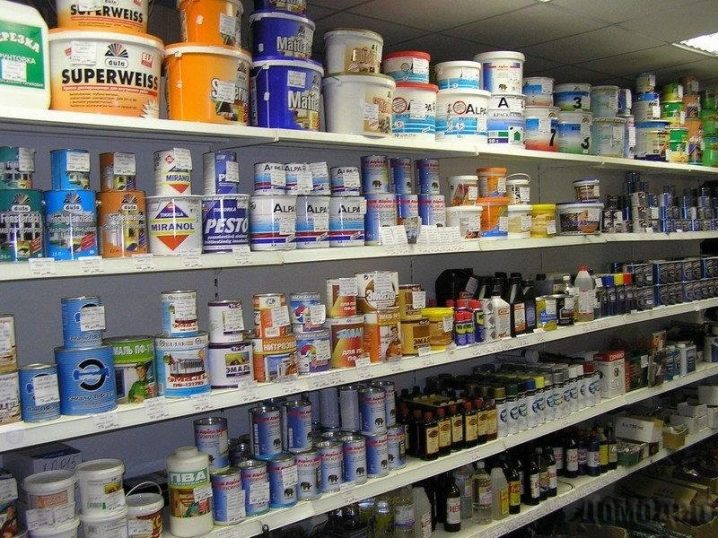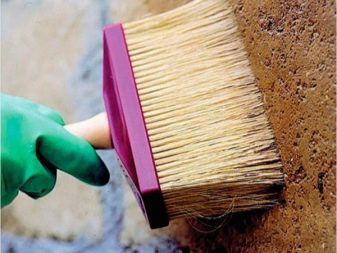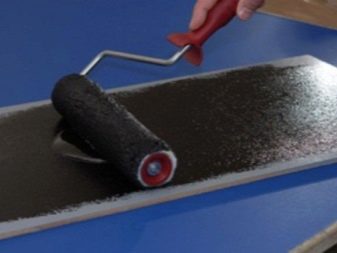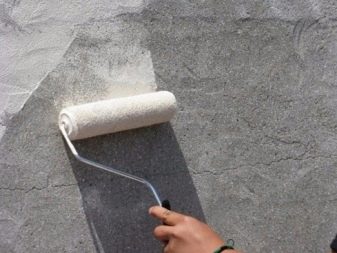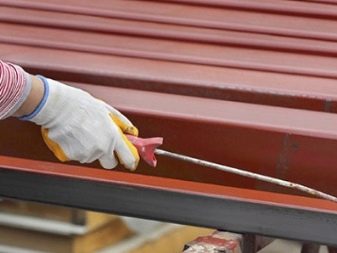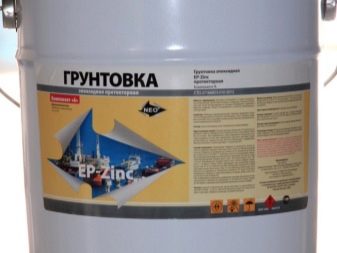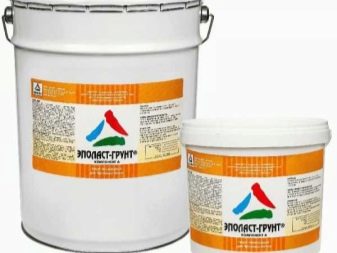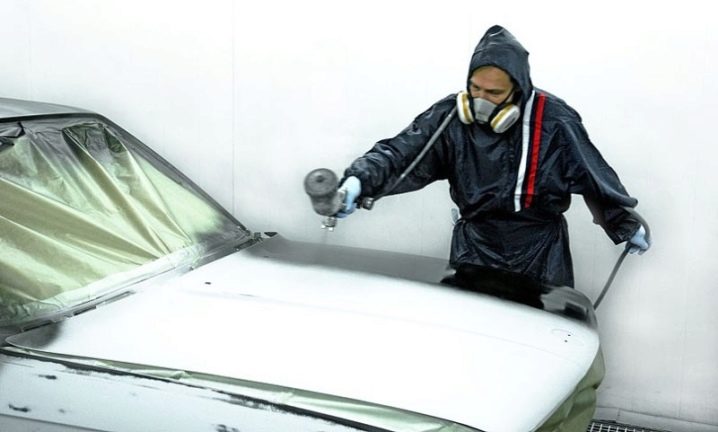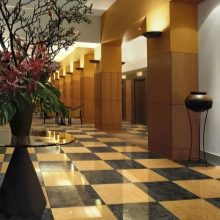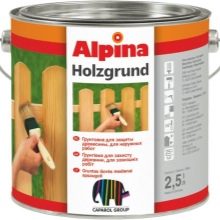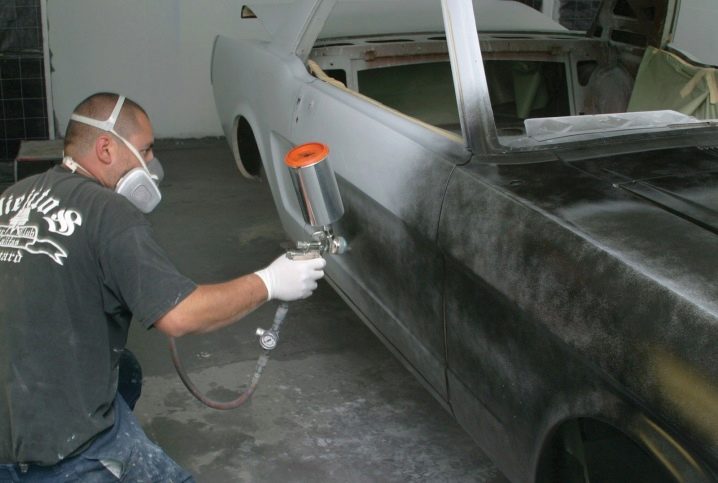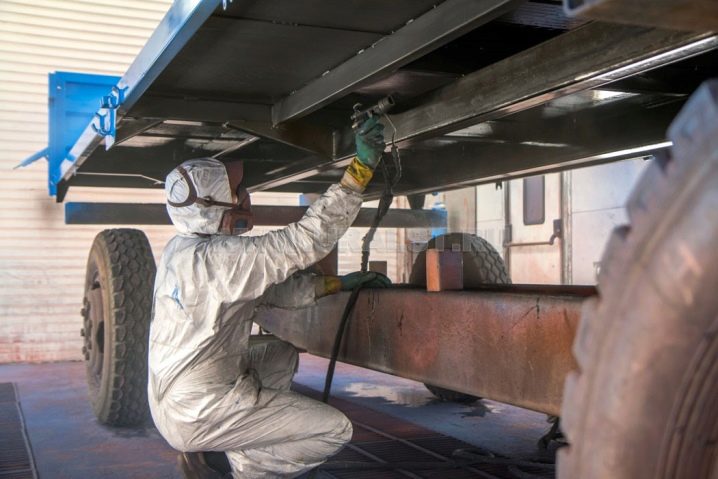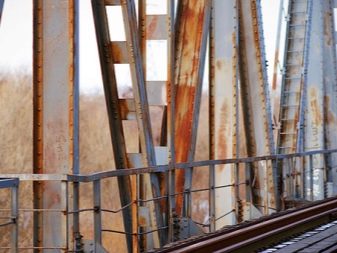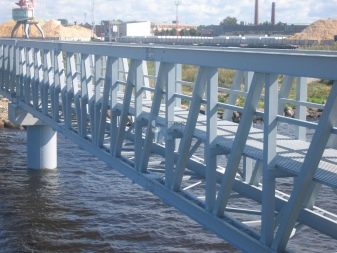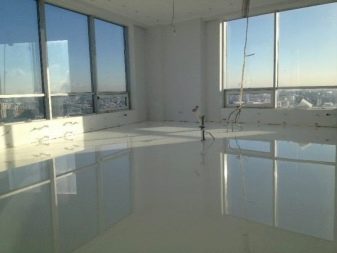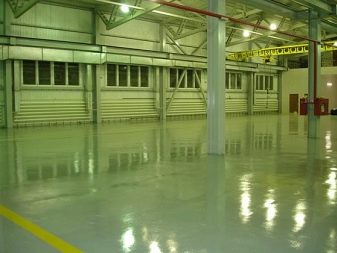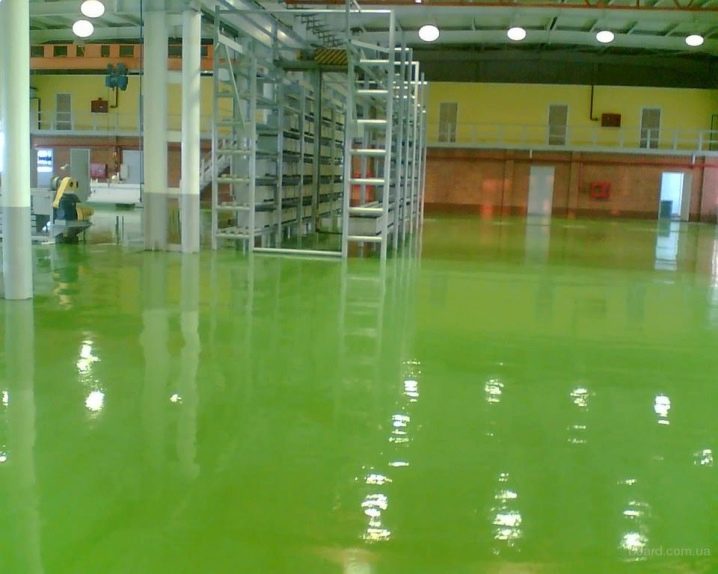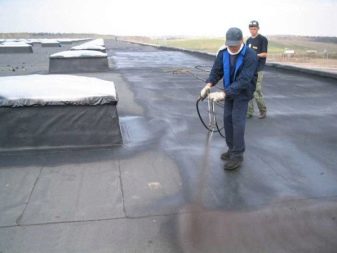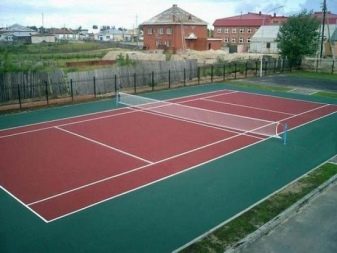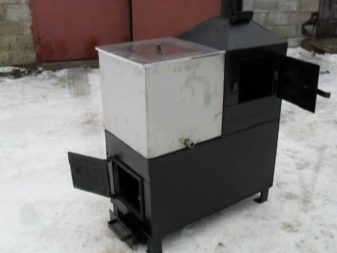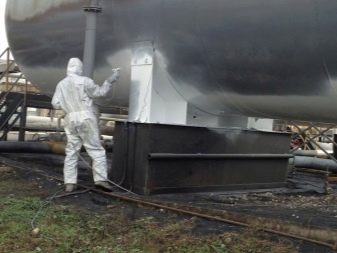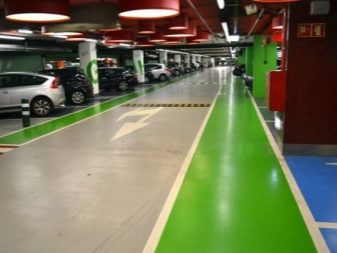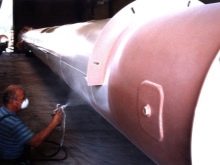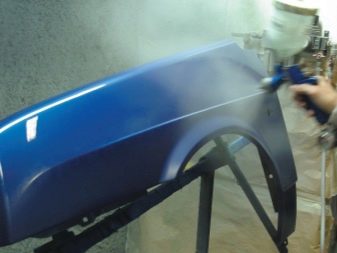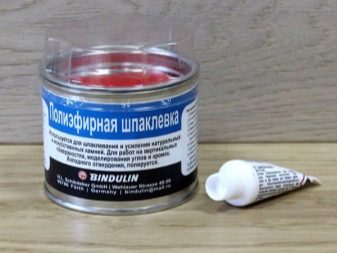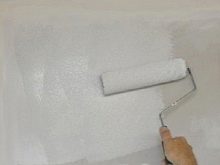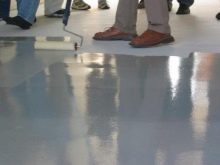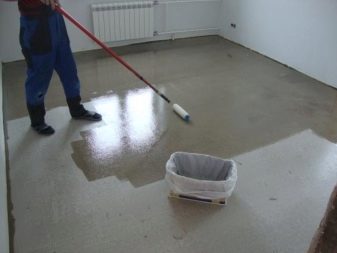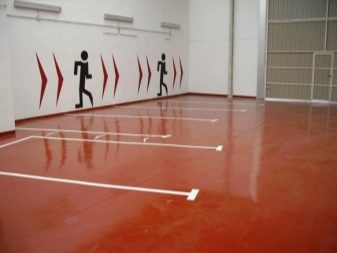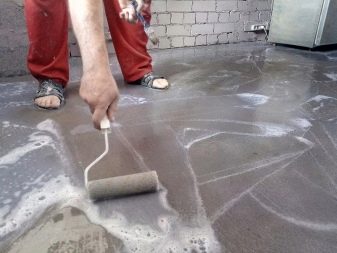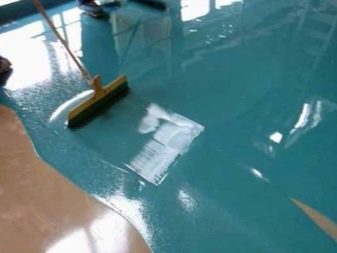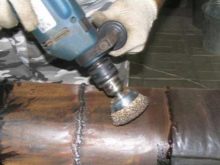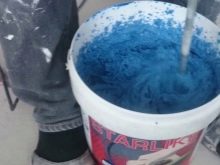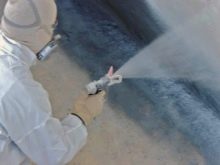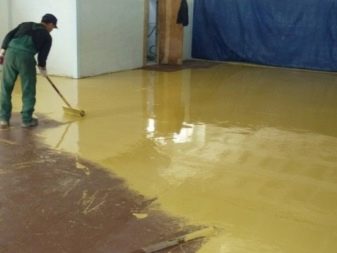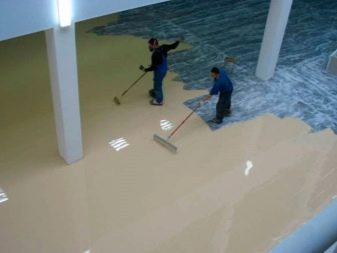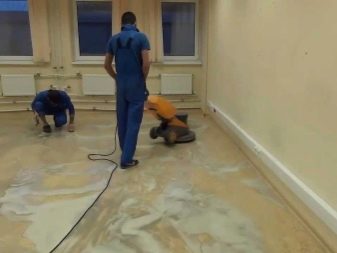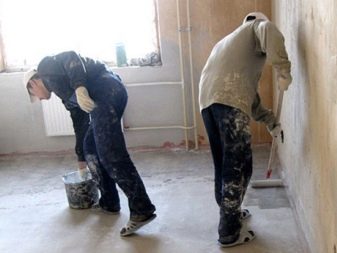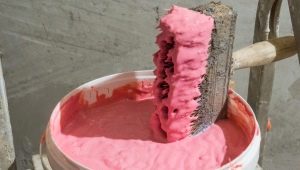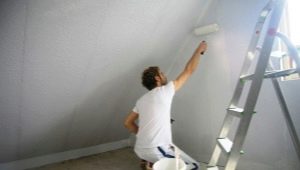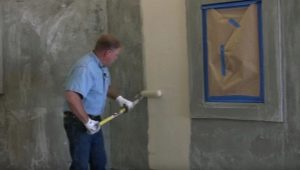Types of epoxy primers, their properties and characteristics
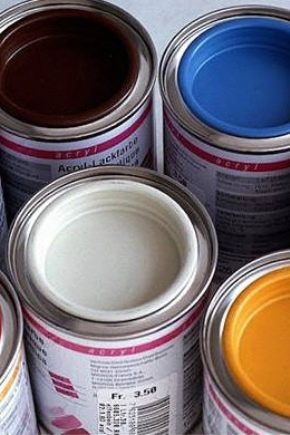
To improve the level of adhesion of the surface and topcoat various primers are actively used. One of the most popular types of this material is an epoxy based primer.
Types of epoxy primers, their properties and characteristics will be discussed in more detail in this article.
Material Features
Epoxy mixture is made on the basis of the resin with the addition of special components to improve the protective properties of the material. This coating is mainly used for concrete and metal surfaces.. Primer properties will depend entirely on the specific type and purpose of the mixture.
Soil based on epoxy resin is well tolerated by sudden temperature changes, and also characterized by resistance to mechanical stress. The material does not exfoliate on the surface after application. This primer is well combined with epoxy based paint products..
What are the?
Epoxy primers have some differences in composition, which affects their basic technical characteristics.
The following factors affect the soil classification:
- the material from which the structure to be processed is made: concrete or metal;
- temperature conditions at which the mixture begins to harden;
- components that are included as a hardener;
- possibility of use with various paints and varnishes;
- in composition, single-component and two-component species are distinguished;
- manufacturer.
Single component
Epoxy based primer is most often produced as a two component blend. The exception is epoxy mixtures, which are applied as a preliminary coating on the car body. Basically one-component primer comes in the form of aerosols..
In many respects, the material is inferior to two-component mixtures, therefore he is not very popular among car owners.
One-component mixture for concrete in addition to its main purpose can be used for wood processing. Wood constructions coated with epoxy composition acquire good moisture resistance.
In addition, one-component solutions are used for complex concrete foundations and to improve the level of adhesion with materials such as:
- ceramic tile;
- tree;
- linoleum.
Single component soils do not contain hardeners, which negatively affects the drying time of the mixture. For this reason, this type of material is not so often used.
Bicomponent
Two-component mixtures are most popular for work on metal and concrete. It is believed that such a composition has a better quality and high performance than a single component primer.
Car owners prefer this particular type of primer. In addition to the excellent protective properties of the coating, two-component compositions for cars can be painted with special pastes to improve the color of the finishing paint layer.
On metal
Epoxy primer for metal surfaces, above all, has good anti-corrosion properties. In addition to epoxy resins, this mixture contains elements such as zinc and phosphoric acid, due to which the soil prevents the formation of corrosion. Primer on metal based on epoxy resin is mainly produced in a two-component form.
Epoxy solution for metal is not combined with all paints and varnishes. Alkyd and polyvinyl chloride paints should not be applied to such a coating.
If necessary, you can close the epoxy layer with an acrylic-based primer.
Zinc-rich
A two-component zinc-based mixture based on epoxy resin is used as a coating for subsequent painting with epoxy and polyurethane paints. This material can also be used as a finishing coating for metal structures that are exposed to the negative effects of the external environment.
Due to the high content of zinc elements, such a primer perfectly protects steel surfaces from corrosion. This coating will last more than ten years as a base layer and more than twenty years in combination with other protective compounds.
For concrete
Epoxy primer is used to treat concrete floors and walls. In turn, mixtures for concrete have their own classification:
- Universal. This type of soil is excellent as a coating for self-leveling floors.
- Configuration "winter". Winter primer is adapted for operation at zero and negative temperatures.
- Fast priming mixture. This species has a high polymerization rate. Solvent free.
- Corrosion inhibiting compounds.
Advantages and disadvantages
Characteristics of epoxy primer are directly dependent on the substances that are part of the mixture, as well as the manufacturer of the material.
Primer mixtures for metal have the following advantages:
- High level of moisture resistance. After the mixture dries, a dense water-repellent film forms on the surface. Thanks to this film, even with prolonged exposure to moisture on the metal does not appear corrosive formation.
- Excellent strength performance.
- Resistance to household chemicals. The soil is not affected by alkalis and acids.
- Resistance to weathering.The primer tolerates sudden changes in temperature, exposure to direct sunlight and precipitation.
- The composition has excellent adherence to the surface.
Primer for metal structures has some disadvantages.
The main disadvantages include:
- Low drying speed. Depending on the manufacturer of this material, the drying time may be different. On average, the mixture dries within twelve hours.
- It is impossible to speed up the drying process by force. Such an impact can cause uneven hardening and blistering on the surface in the form of bubbles.
All epoxy mixes for concrete primarily strengthen the base and improve the adhesion of the surface to the final coating.
Other advantages of such solutions include the following characteristics:
- single component formulations are completely fire safe;
- good wear resistance;
- resistance to mechanical stress;
- increase the life of the concrete surface;
- hardening of concrete and preventing its possible cracking and shedding;
- high rate of complete drying.
Application area
The scope of application of epoxy primer depends primarily on its original purpose. Mixtures for metal and concrete are used for completely different purposes.
Two-component epoxy primer for metal is used primarily to create a corrosion-resistant coating.
This mixture can be applied to the following materials:
- galvanized steel;
- steel structures;
- black metals;
- light metal materials;
- bicomponent fillers based on unsaturated polyester resins.
Epoxy metal mixture is especially often used as an automotive coating.
As for concrete substrates, epoxy primer is used for the following purposes:
- reinforcement of concrete;
- treatment of walls and floors before applying the finish coating;
- as a basis under bulk floors.
Recommendations for selection
The choice of epoxy primer primarily affects the type of surface on which the mixture will be applied. Before buying it is recommended to familiarize yourself with popular manufacturers of this material. What else you should pay attention to is the composition of the mixture, as well as specific technical characteristics,which will be listed on the packaging of the goods.
Consider some more tips on choosing the right composition:
- The mixture should interact well with the finish coat. In this case, universal formulations that are combined with all types of paint and varnish coatings will be convenient.
- For interior decoration is better to use soils without the content of organic solvents. Such materials are the safest and do not harm human health.
- The composition of the primer should not contain harmful components that are released into the air after the coating hardens. Especially when it comes to interior decoration.
- It is desirable that the mixture has a good resistance to acids and alkalis.
- Quality soil will surely possess such properties as wear resistance and durability. When buying, check out the manufacturer’s specifications on the packaging of the product.
Application Tips
The technology of applying mixtures on epoxy base depends on the type of surface being treated.
The coating of metal bases with epoxy primer is as follows:
- The base is cleaned of rust and other contaminants, after which the surface is degreased.
- The next step is to prepare the mixture for application. One-component composition in an aerosol can simply shake well. Two-component mixtures must be prepared for application in accordance with the instructions on the package.
- It is most convenient to apply the solution to the surface with a spray gun or a brush. The primer is applied in three layers. The last layer must be well polished.
Application of soil to concrete has its own characteristics. Such work is recommended at a temperature not lower than fifteen degrees. Under the influence of low temperatures, some substances that are part of the soil, lose their positive properties.
Exceptions are certain types of material that are adapted to lower temperatures, for example, winter primer.
This type of coating is allowed to be applied at a temperature not lower than minus three degrees.
Before finishing, the concrete surface is cleaned of the old coating and various contaminants. The next step will be the preparation of a priming mixture for application.In this regard, one-component compositions are more convenient than two-component compositions, since they are already ready for use.
A solution of two-component mixtures prepared in accordance with the instructions, which are indicated on the packaging material. The soil is distributed over the surface with a roller or spray gun.
See the next video for a master class on applying epoxy primer.
